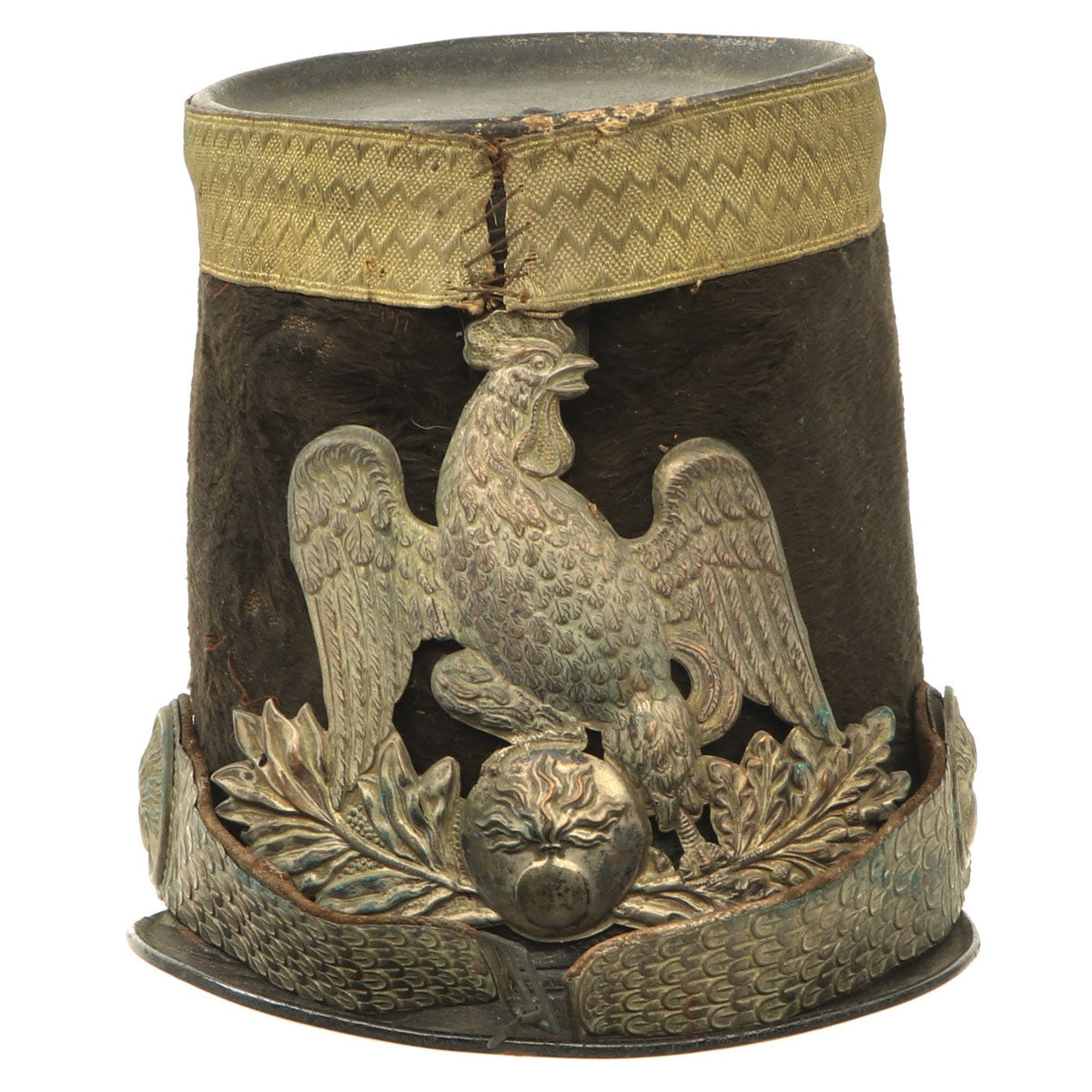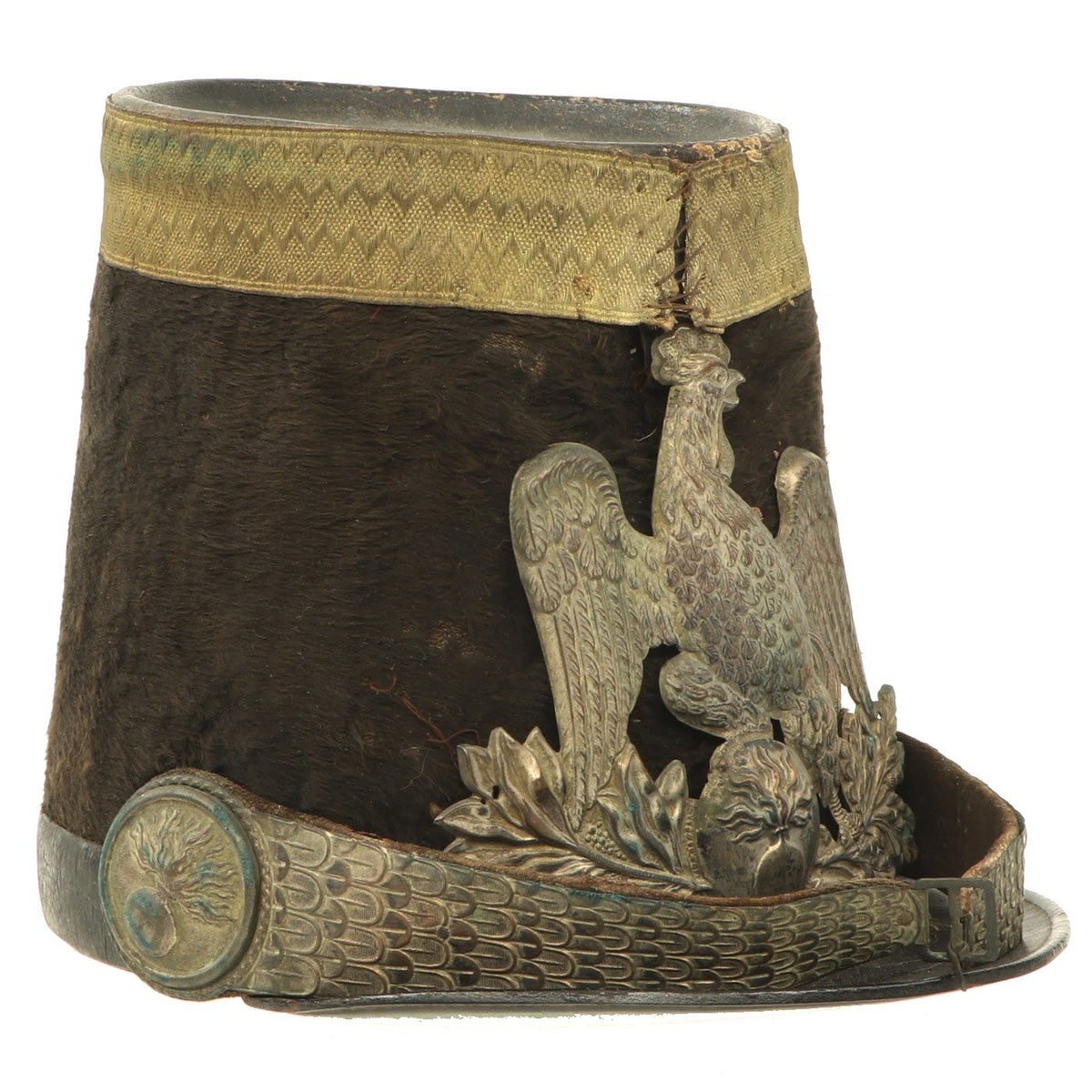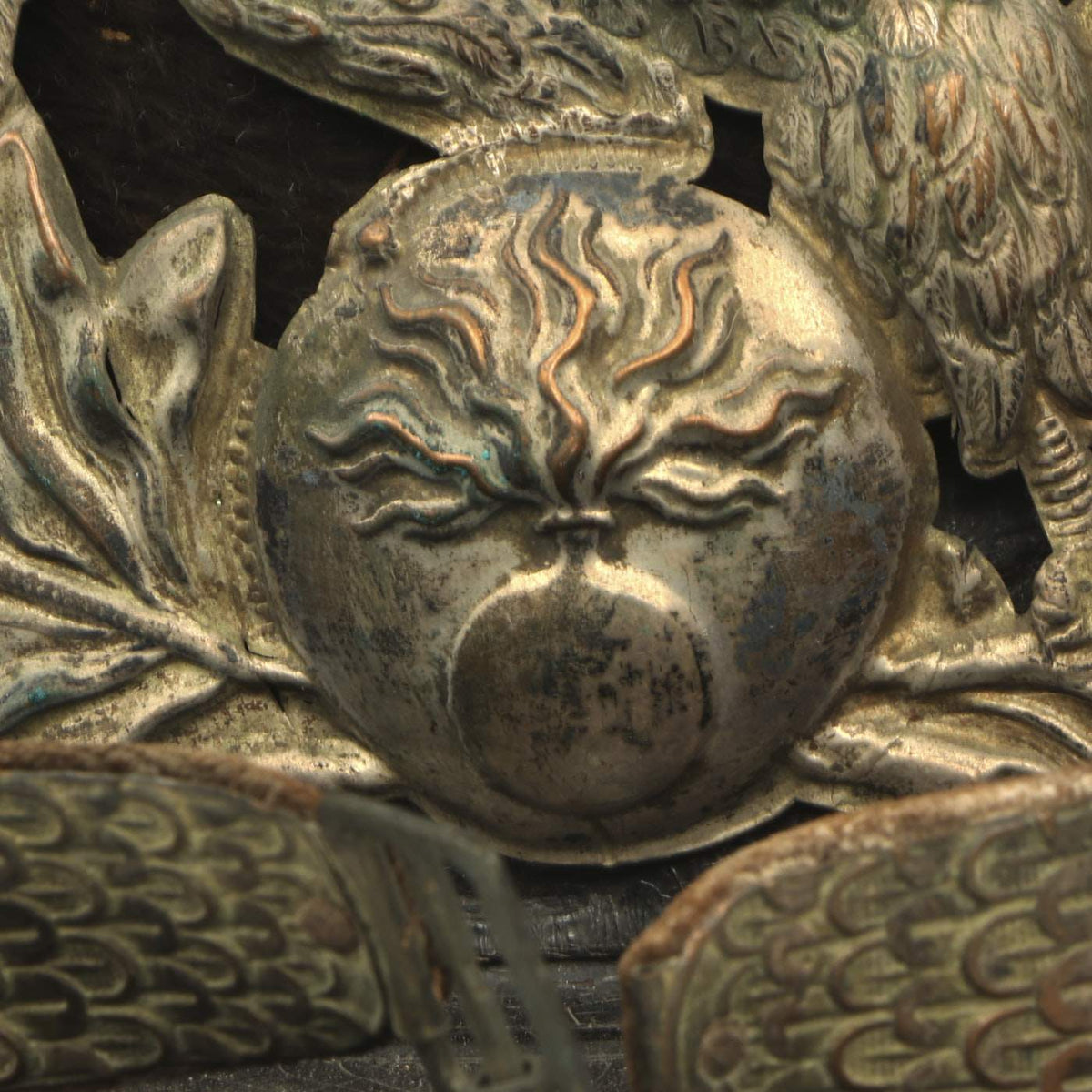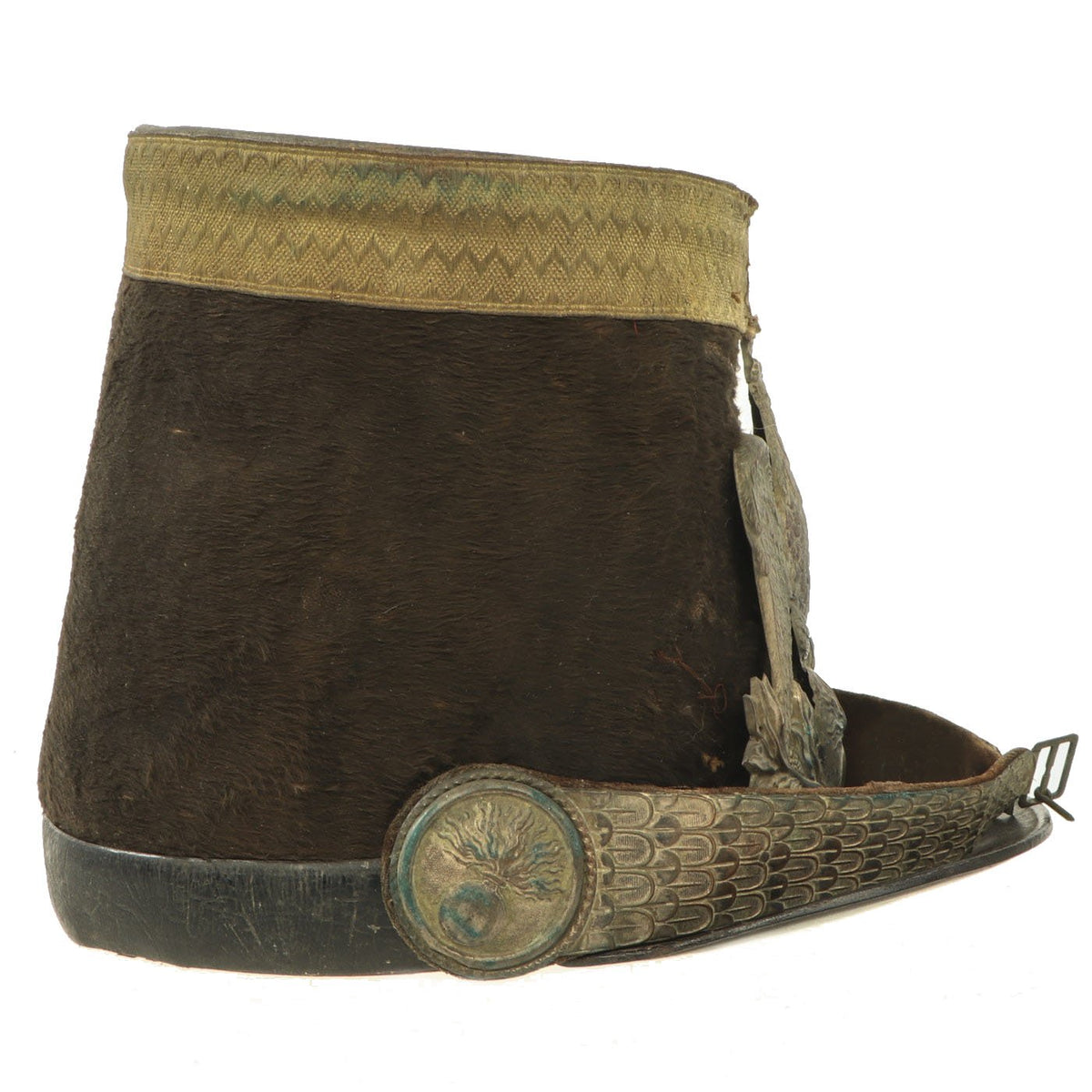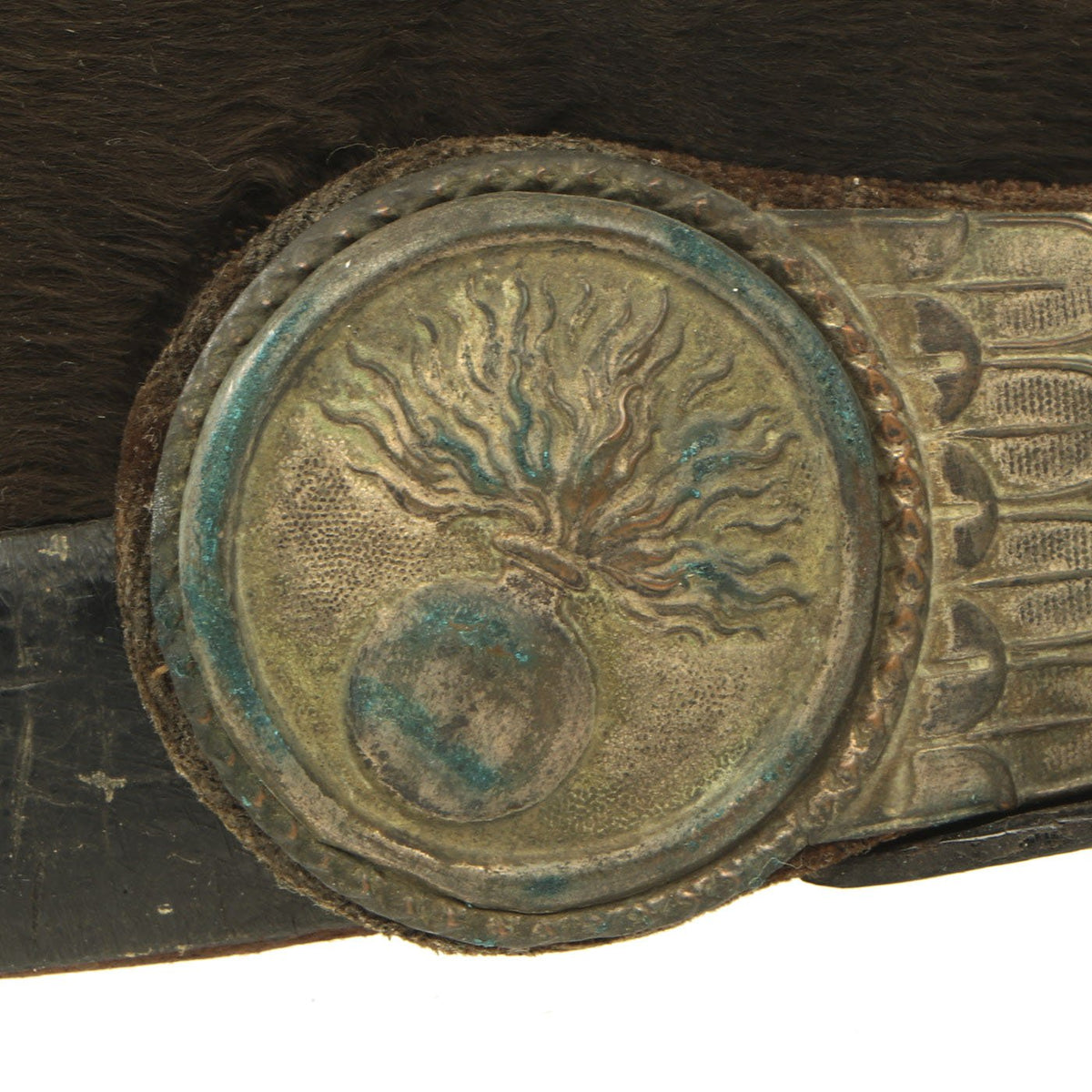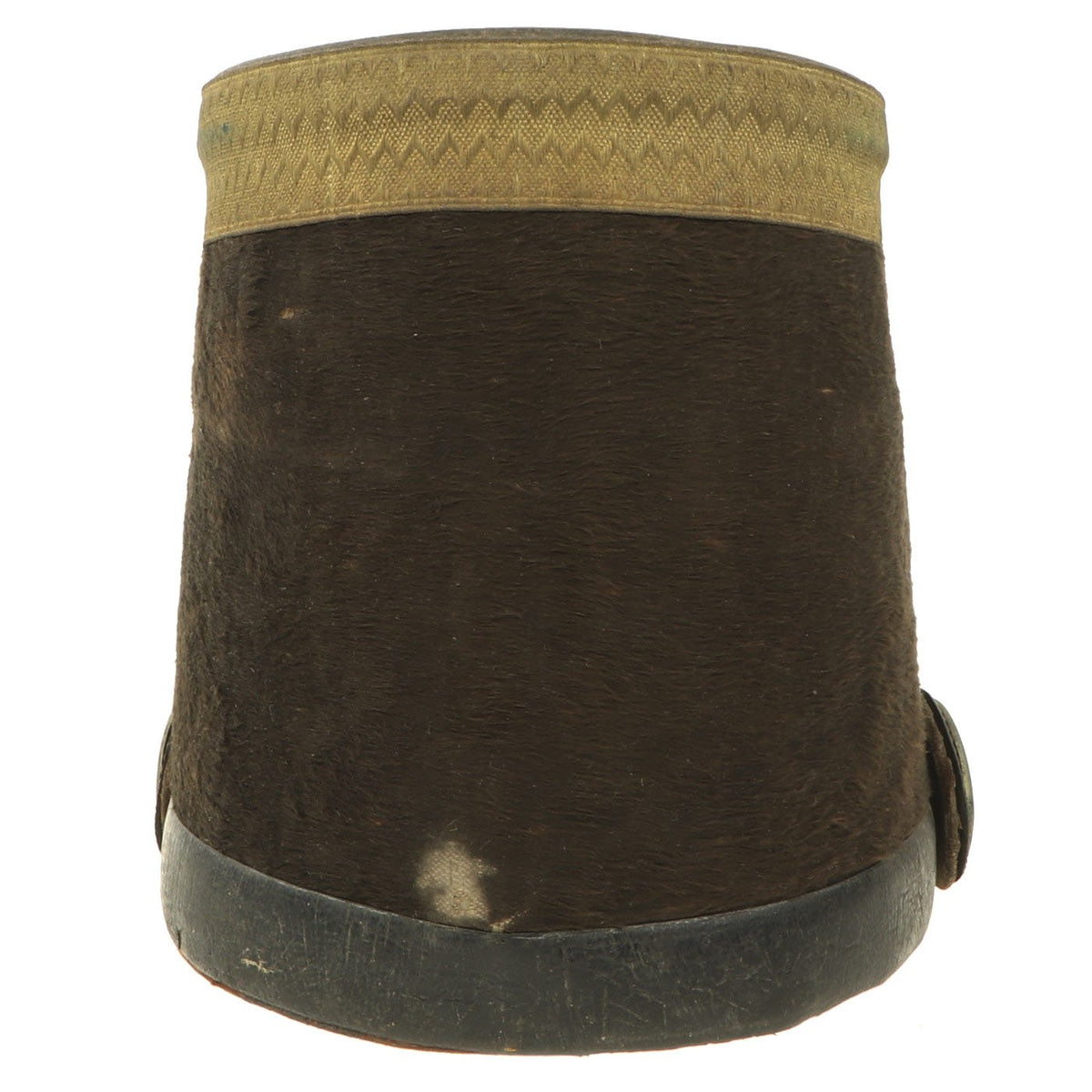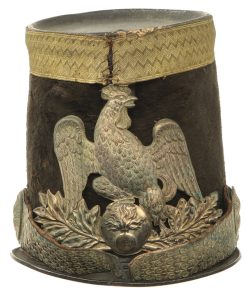Original French Model 1837 July Monarchy Grenadier Officer’s Shako Original Items
$ 495,00 $ 148,50
Original Item: Only One Available. This is an original French Model 1837 Grenadier officer’s shako from the Louis-Philippe reign of 1830-1848. The helmet plate displays the Gallic cockerel on a wreath inset on the outside of the flaming bomb plate motif. The plate has unfortunately lost the mounting hooks, so it is not attached to the shako currently. It is missing the red, white and blue cockade surmounted by a Pom-Pom to top. The color of the Pom-Pom denotes the actual unit, so this one is a bit of a mystery, though we do know it was for an infantryman.
Comes complete with the standard embroidered gold band around helmet top and quality embossed brass scaled chin straps with flaming grenade devices above the ears at the connection points.
Offered in good but faded condition overall. Much of the original black leather headband remains, but is quite crumbly and not complete. The exterior black beaver-felt material is somewhat faded but not detrimentally so. Totally original and color faded showing use from just after the fall of Emperor Napoleon at the Battle of Waterloo up until the Crimean War of the 1850s.
Dimensions:
Overall length: 10”
Overall width: 7 ¾”
Height: 8”
Circumference: 21”
Weight: 9 oz.
History of the shako-
The word shako originated from the Hungarian name csákós süveg (“peaked cap”), which was a part of the uniform of the Hungarian hussar of the 18th century. Other spellings include chako, czako, schako and tschako.
From 1800 on the shako became a common military headdress, worn by the majority of regiments in the armies of Europe and the Americas. Replacing in most instances the light bicorne, the shako was initially considered an improvement. Made of heavy felt and leather, it retained its shape and provided some protection for the soldier’s skull, while its visor shaded his eyes. The shako retained this pre-eminence until the mid-19th century, when spiked helmets began to appear in the armies of the various German States, and the more practical kepi replaced it for all but parade wear in the French Army. The Imperial Russian Army substituted a spiked helmet for the shako in 1844-45 but returned to the latter headdress in 1855, before adopting a form of kepi in 1864. Following the Franco-Prussian War of 1870, military fashions changed and cloth or leather helmets based on the German headdress began to supersede the shako in many armies.
Although the mid-nineteenth century shako was impressive in appearance and added to the height of the wearer, it was also heavy and by itself provided little protection against bad weather as most models were made of cloth or felt material over a leather body and peak. Many armies countered this by utilizing specially designed oilskin covers to protect the shako and the wearer from heavy rain while on campaign. The shako provided little protection from enemy action as the most it could offer was in giving partial shielding of the skull from enemy cavalry sabres
Fast Shipping with Professional Packaging
Thanks to our longstanding association with UPS FedEx DHL, and other major international carriers, we are able to provide a range of shipping options. Our warehouse staff is expertly trained and will wrap your products according to our exact and precise specifications. Prior to shipping, your goods will be thoroughly examined and securely secured. We ship to thousands clients each day across multiple countries. This shows how we're dedicated to be the largest retailer on the internet. Warehouses and distribution centres can be located throughout Europe as well as the USA.
Note: Orders with more than one item will be assigned a processing date depending on the item.
Before shipping before shipping, we'll conduct a thorough inspection of the items you have ordered. Today, the majority of orders will be delivered within 48 hours. The delivery time will be between 3-7 days.
Returns
The stock is dynamic and we cannot completely manage it because multiple stakeholders are involved, including our factory and warehouse. So the actual stock may alter at any time. It's possible that you may not receive your order once the order has been made.
Our policy is valid for a period of 30 days. If you don't receive the product within 30 days, we are not able to issue a refund or an exchange.
You can only return an item if it is unused and in the same state as the day you received it. You must have the item in its original packaging.
Related products
Uncategorized
Uncategorized
Uncategorized
Armored Burgonet Helmet & Polearm from Scottish Castle Leith Hall Circa 1700 Original Items
Uncategorized
Uncategorized
Band of Brothers ORIGINAL GERMAN WWII Le. F.H. 18 10.5cm ARTILLERY PIECE Original Items
Uncategorized
Uncategorized
Uncategorized
Uncategorized
Uncategorized
Uncategorized
Uncategorized
Uncategorized
Uncategorized
Uncategorized
Uncategorized
Uncategorized
Uncategorized
Angolan Rebel 1970s era 60mm Inert Display Mortar from Angolan Civil War Original Items
